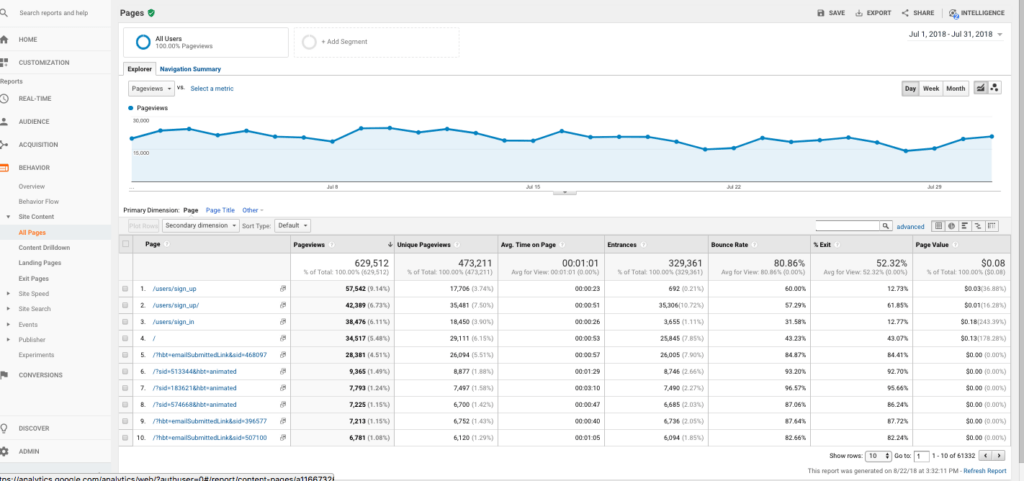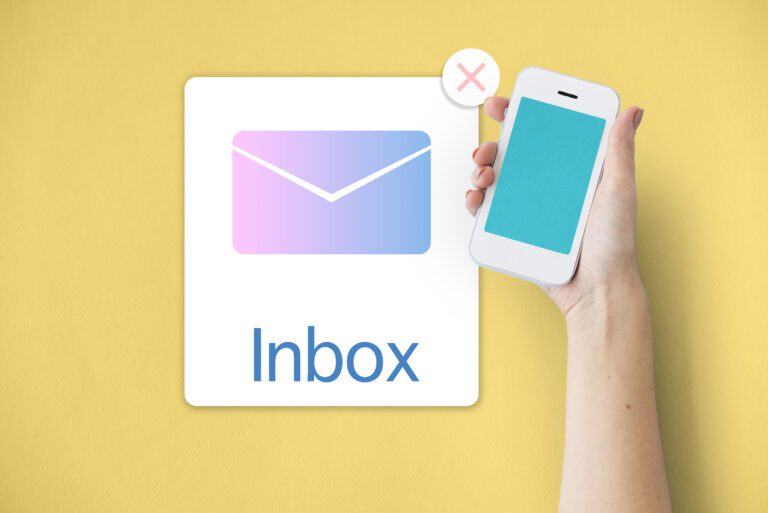13 Content Upgrade Ideas to Turn Blog Post Readers into Leads
I hope you enjoy this blog post. If you want Hello Bar to grow your leads, click here.
Author:
Ransom Agui
Published
September 18, 2024

If you’re looking to grow your email list fast, free reports and white papers are among the traditional go-to lead magnets you could turn to. But even these time-tested lead magnets are sometimes hit or miss.
And with website conversion rates hovering around 2.9%, according to a study, it’s clear that something needs to change.
This raises an important question: What can you offer that will encourage people to willingly share their email addresses? The answer lies in content upgrades.
Thanks to their ability to bring in a wave of new email subscribers, content upgrades are among the top lead generation strategies worth trying in 2024.
Let’s start at the beginning.
What is a Content Upgrade? How Does It Work?
A content upgrade is a method for generating leads on your website that works by offering extra information, an extended version of the article, or an extra piece of content that is closely related to the article. It’s practical because you can simply repurpose your existing content—like turning a full article into an audio recording or expanding content to include new information.
Utilizing text-to-speech software can quickly convert your written content into audio files, making it more accessible and appealing to audiences who prefer listening over reading.
You don’t have to create something new to offer a content upgrade to generate leads. Since your articles, when optimized for search, already generate traffic from search engines, you can simply leverage this by adding a form field with a call to action.
How is a Content Upgrade Different from a Lead Magnet?
Content upgrades and lead magnets serve the same purpose. They’re designed to help you collect leads.
A lead magnet is simply a whole piece of content or something else of value that you offer in exchange for contact information. A content upgrade is a little different. Think of it as an extension of existing content.
Let’s say that you write a post with 101 tips to train your dog. You post the first 20 tips on your website, then insert the content upgrade.

If people want to read the full piece of your content, they need to give you their email address in exchange for the download.
A content upgrade is different from a lead magnet because it’s specifically related to the primary piece of content they are reading.
Here’s a quick guide to help you remember the difference between lead magnets and content upgrades.
| Lead Magnets | Content Upgrades | |
| Collects Email Addresses | Yes | Yes |
| Offers Valuable Information | Yes | Yes |
| Partially Available “For Free” | No | Yes |
| Always Gated Content | Yes | No |
| Converts Audience to Lead | Yes | Yes |
You May Also Like:
- How to Attract Traffic That Converts
- Headline Writing: 15 Great Tips That Will Skyrocket Your Conversions
Why Should You Invest in Content Upgrades?
Here’s the thing, lead magnets are great for capturing emails. However, they don’t have nearly the same power as content upgrades. Let’s look at the main reasons why you should use content upgrades:
1. Higher Quality Leads
Content upgrades are like magnets for the right kind of people. Because they’re directly related to your content, you’re essentially attracting people who are interested in what you have to offer. It’s a fantastic way to build an email list of people who are a perfect fit for your business.
2. A Fresh Approach to List Building
We’ve all seen those flashy, trendy list-building tactics. They might work well initially, but people quickly get tired of them. Content upgrades, on the other hand, have stood the test of time. They consistently deliver results because they provide value that directly addresses readers’ needs.
3. Quick and Easy to Create
Have you ever spent ages crafting the perfect lead magnet, only to receive dismal results at the end of it all? Content upgrades are quite the opposite.
They’re focused pieces of valuable content that are super fast to create.
And the best part? If one doesn’t work, you can quickly experiment with something new. The more you do it, the better you’ll understand your audience and create content upgrades that convert.
4. Easy Testing and Improvement
The key to building a large, engaged email list is variety. By offering different types of content upgrades, you can easily test what works and what doesn’t. It’s okay if something doesn’t perform well—it’s a learning opportunity.
5. Enhanced User Experience
Content upgrades fit naturally into your content and provide extra value without being intrusive. It creates a much better user experience, which can lead to increased trust, higher engagement, and even improved search rankings.
You May Also Like:
- 9 Strategies on How to Generate Leads from Your Website
- 25 Proven Methods on How to Increase Website Traffic and Get Leads
How to Map Out Your Blog and Start Generating Leads Using Content Upgrades: 3 Easy Steps
Let’s look at the three steps you can take to use content upgrades on your blog to start generating leads immediately.
Step 1: Identify a High-Traffic Content Page on Your Website
It is very important to note that there is no reason to create a content upgrade for a blog post or article that doesn’t get any traffic. If there are no readers engaging with the content, you won’t get any leads.
Visit Google Analytics and identify your top-performing posts based on traffic. Go to your dashboard, select Behavior, click Site Content, and select all pages.
You can filter the resulting pages to specific content on your site. You may want to focus on blog pages.

Import that data into a spreadsheet so you can track your progress.

You can always create new content for a content upgrade, but that’s a gamble. This is especially true if you don’t know your audience very well because you can’t predict traffic and engagement.
Focus first on the evergreen content you know performs well, then move on to new content with content upgrades. The most important thing is that your content upgrades are seen by the most traffic, so do your research upfront.
Step 2: Create a Content Upgrade for Your High-Traffic Pages
Let’s say you have an awesome, detailed article on 20 tips for training dogs on your website. It gets decent traffic, lots of people have shared it on social media, and it has attracted several comments.
That’s a great start. From here, you can create additional content for the content upgrade.

Step 3: Ask Your Blog Visitors for Their Information in Exchange for the Content Upgrade You Just Created
Now you have to publish your content upgrade—not the upgrade itself, but the lead generation form.
Let people know that they can download the full version of the piece by providing whatever information you require.
An email address is usually enough, though some marketers like to ask for first names to personalize their marketing messages.
Think about your form fields from a psychological perspective. You’re collecting leads from content on your site, which means people are searching for information.
They’re not necessarily ready to buy. Consequently, they’re unlikely to divulge tons of personal information about themselves, nor will they take too much time out of their day to get your content upgrade.
Limiting your form to one or two fields is typically the best practice when you’re targeting top-of-funnel leads. You’re creating fewer obstacles for people who want your content.
Make sure to use a service that offers GDPR compliant opt-in forms. You want your leads to confirm that they want to receive your emails in the future and that they’ve seen your privacy policy and terms of service.
You May Also Like:
- 18 Foolproof Headline Writing Tips You Should Know
- Best 43 Call-to-Action Phrases Proven To Increase Clicks and Leads
13 Killer Content Upgrade Ideas to Turn Website Visitors Into Leads
1. Free Email Courses
If you’re already a knowledge powerhouse in your field, turning your expertise into an email course is a no-brainer. Basically, it’s a series of emails that teach your subscribers something new.
They’re easy to create (as long as you know your stuff) and way cheaper than fancy graphics or videos. Plus, they’re a fantastic way to keep your subscribers engaged and excited about what you do.
Because they’re getting regular emails from you, they’re more likely to open your future messages. And, bonus, your email course can also serve as a warm welcome for new subscribers!
2. Worksheets
Worksheets are a great tool to help people work through challenges. Ask thought-provoking questions and give them space to jot down their ideas.
Whether it’s an interactive PDF, a Google Doc, or a printable page, the goal is to make it easy for your audience to engage with your content. If you decide to use the printable route, keep it simple. Avoid those fancy graphics that’ll drain their ink while printing them out.
3. Video Tutorials
If your blog post explains why people should do something, a video tutorial is the perfect way to show how it’s done. And you don’t need fancy equipment to get started.
Many computers come with built-in video recording software, and there are countless user-friendly editing apps available online. Once you polish your video, consider sharing it on platforms like YouTube or Vimeo.
If you want to make it exclusive for your subscribers, you can adjust the privacy settings and share a private link in your welcome email.
4. Audio Files
For content that’s better suited for listening, like exercises or storytelling, audio files are a great option. You can easily create them using software you probably already have.
To share your audio, you can either offer it as a downloadable MP3 or embed a player on your website using a platform like SoundCloud.
5. PDF guides
PDFs are super versatile for content upgrades. They can be as simple as a downloadable blog post or as complex as a detailed guide. But remember, everyone’s been doing PDFs for years.
So, if you decide to use it, make sure it’s something valuable that your audience will love. Otherwise, it might just get lost in the digital clutter.
You May Also Like:
- A Map to Creating Your Own Interactive Lead Nurturing Strategy
- Newsletter Subject Lines: Tips to Create Yours In Under 1 Minute
6. Swipe Files
A swipe file is essentially a curated collection of ideas and inspirations that people can use to streamline their creative processes. Rather than starting from scratch, a swipe file allows users to “borrow” concepts, saving both time and effort in research and development.
For instance, if you’ve written a blog post on color theory in graphic design, you can upgrade it by offering a swipe file filled with various color palettes, design templates, and their corresponding codes. It will serve as a practical resource that users can revisit repeatedly.
The key is to focus on how you can simplify tasks for others and compile useful information into a single, accessible swipe file.
7. Checklist
While technically a PDF, checklists deserve their own spotlight. They turn your blog post from a passive read into a dynamic action plan. A checklist makes it easy for readers to put what they’ve just learned into action instead of giving them too much information at once.
The best part? Checklists are incredibly simple to create. You can make a ready-to-use checklist by taking the most important steps from your blog post. It’s a quick and effective way to boost your content’s impact.
8. Webinar or Masterclass
Visuals can sometimes help your idea stand out more. That’s where webinars, or masterclasses, come in. They deliver a lot of impact in a short amount of time, whether they are recorded or performed live.
For example, if you’re gearing up to launch a new product, your blog posts can build anticipation. A webinar can then take those interested readers to the next level.
Webinars, however, aren’t merely platforms for promotional materials. Another benefit is that they let you connect with your audience on a deeper level.
You May Also Like:
- SEO For Lead Generation: How To Skyrocket Organic Leads
- Email Marketing For Beginners: A Complete Guide
9. Scripts & Formulas
There’s something undeniably satisfying about providing people with the exact words or framework they need to succeed. Whether it’s guiding someone through a complex process or helping them write a compelling message, scripts and formulas offer a clear path to success.
For example, if your blog addresses how to handle difficult client situations, you could include a content upgrade that offers scripts for emails or conversations. This gives readers concrete examples of what to say, making it easier for them to navigate challenging discussions with confidence.
10. Waitlist for a Paid Offer
A waitlist for a paid offer can be a strategic way to gauge interest in a new product or service before its launch. Instead of relying solely on webinars, a waitlist allows you to test the waters with an audience that is already engaged with your content.
While not a resource in itself, a waitlist can be sweetened with exclusive perks or early bird discounts to encourage sign-ups. It’s a brilliant strategy to gauge interest in your new product or service and make adjustments as needed.
11. Case Studies
Case studies provide an inside look at how your company or you solved a customer’s problem and achieved a successful outcome. These are more than just things you can say; they are powerful instruments that highlight your knowledge and offer them a taste of your enchantment.
Everyone loves a good story, especially one that ends in success. If you want your case study to stand out, you need to show how you solved the customer’s problem.
What challenges were they facing? How did they feel before they found you? Then, paint a picture of the transformation. Prove that your service or product came swooping in like a savior to their plight.
12. Access to Exclusive Content
Got something special up your sleeve? Consider offering a sneak peek to entice potential customers. Perhaps you have a members-only section brimming with valuable insights. Tease them with a free sample to encourage them to join your email list.
It could take the form of an insightful interview with an industry expert or a sneak peek behind the scenes of your business operations. By showcasing the value of your exclusive offerings, you not only encourage sign-ups but also give potential customers a taste of what they can expect from a paid membership.
13. Giveaways
Giveaways are a fun and effective way to rapidly grow your email list. And guess what? You don’t need to break the bank to do it.
Instead of offering a mansion or a sports car, consider giving away something valuable to your audience. A free month of your membership or a helpful ebook can do the trick. To make it even more exciting, team up with other businesses for a bigger prize.
Just remember, a successful giveaway is offering something people actually want and making sure everyone knows about it.
You May Also Like:
- How to Generate Leads from Email Marketing: 11 Ways
- Different Types of CTAs and How to Use Them Effectively
Best Practices to Create Click-Worthy Content Upgrades
Here are a few best practices on content upgrades to avoid going buck wild with them:
1. Keep It Concise and Valuable
To start, keep your content upgrades concise. While they should provide substantial value, there’s no need for them to be overly lengthy. Short and straightforward upgrades can often deliver the most impact.
Focus on distilling your ideas into digestible formats that your audience can quickly grasp and use. In addition to showing respect for your readers’ time, this method makes them more likely to interact with your content.
2. Give Preference to the Design
While perfection in design isn’t necessary, a polished and professional look can make a significant difference. Investing in a designer from platforms like Elance, 99Designs, or Fiverr can help you create a template that resonates with your brand.
To keep things uniform and cut down on design time, you may simply edit this template for future updates. Potential subscribers are more likely to notice and download an upgrade if it looks good.
3. Encourage Social Sharing
Incorporating shareability into your content upgrades is another crucial element. Make it easy for users to share your upgrades across social media platforms.
Tools like Click to Tweet can facilitate this process, helping your content gain traction and reach a wider audience.
4. Don’t Stop at the Download
Once your audience has downloaded the content upgrade, it’s vital that you communicate the next steps clearly.
Clearly outline the steps you want your readers to take after engaging with your content. Whether it’s subscribing to your newsletter, following you on social media, or checking out related articles, a well-placed call to action can increase user engagement and conversion rates.
5. Choose an Effective Delivery Method
Depending on the type of content upgrade, you might choose to redirect users to a download page or send them an email with the resource link.
Opting for the latter can be particularly effective, as it encourages new subscribers to check their email, boosting your email open rates.
6. Leverage the Power of Useful Tools
Incorporate tools that improve the user experience and provide additional value. Tools like Hello Bar and Piktochart can help you make the most of content upgrades.
Piktochart allows you to create engaging, professional assets to distribute to your leads. Design your own engaging infographic or organized data report like the ones you see here.


When you have your content upgrade ready, deploy Hello Bar to collect email addresses from people who want to download it. You can create an enticing offer quickly and push it live to your site in seconds.
You May Also Like:
- Copywriting Tips: 23 Ultra Effective Steps to Increase Conversions
- Ways to Use Calls to Action (CTAs) in Your Marketing Strategy
Content Upgrade Successful Case Studies to Inspire Your Lead Generation Campaign
Tim Soulo over at BloggerJet increased his conversion rate by 300 percent using a content upgrade. Amazingly, he didn’t offer a super-long piece of content or a detailed toolkit. Instead, he simply offered to share a secret.

Just an email subject line. That’s all.
But it worked. People know Rand Fishkin as a premier marketer, and they wanted to know how Tim successfully got him to return an email.
If a simple content upgrade like that can boost conversions by 300 percent, imagine the results you can get with something a little more expansive.
ChordBuddy has also had excellent results from using content upgrades to boost conversions. You can see one here:

This one’s also pretty simple in design. It also comes with a discount, which makes it even more attractive to readers. This site converts at nearly 3 percent, which makes it an excellent example.
Then you have Neil Patel, who needs no introduction. He used a content upgrade on his blog and experienced an increase in email collections of nearly 37 percent.

FAQs
Q1. How do I convert blog readers to leads?
A. Offer valuable content upgrades or lead magnets, such as ebooks or checklists, in exchange for their contact information. Additionally, you should implement clear calls-to-action (CTAs) throughout your posts, encouraging readers to take specific actions, such as signing up for a newsletter or downloading a resource.
Q2. What are content upgrades?
A. Content upgrades are additional resources related to a blog post, offered in exchange for email sign-ups, to provide more in-depth information. They typically include downloadable resources like templates, checklists, or exclusive videos that are directly related to the blog post topic.
Q3. What is the purpose of a lead magnet?
A. The purpose of a lead magnet is to attract potential customers by offering them something of value in exchange for their contact information. This could be in the form of ebooks, webinars, free trials, or discounts, aimed at addressing specific needs or problems of your target audience. Lead magnets are essential for building an email list and nurturing leads through the sales funnel.
Q4. How do you revamp content?
A. To revamp content, start by analyzing its performance using metrics like engagement and conversion rates. Update outdated information, enhance readability with better formatting, and incorporate visuals or multimedia elements to make it more engaging.
Q5. What is the difference between content upgrade and lead magnet?
A. A content upgrade is specifically tied to an existing blog post, while a lead magnet is a standalone piece of content offered across various platforms.
Conclusion
To generate leads through email marketing, you can go beyond free reports and white papers. Content upgrades can be an easy yet effective method you should include in your marketing strategy this year. They’re more effective than traditional lead magnets in capturing email addresses, and have higher conversion rates because they add value that’s directly related to the blog content.
You can test it out by adding a content upgrade to your best-performing blog post. But if you really want your email list to grow faster, you can follow some of the content upgrade ideas we shared above and add them to as many blog pages as possible. Hello Bar is the perfect tool to help you collect email addresses from content upgrades. Try Hello Bar now!



